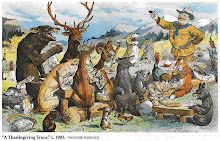http://www.valleycentral.com/news/story.aspx?id=1085762#.U_V_AYl-y-M.gmail
The only wild breeding population of ocelots in the United States clings to a precarious existence in deep South Texas, where less than 50 of the endangered cats are thought to remain.
While habitat loss throughout their range is the primary reason for their declining numbers, being struck by vehicles as they roam is perhaps the greatest threat.
Boyd Blihovde says, Manager Laguna Atascosa National Wildlife Refuge, "On July 9th, 2014 we had our fourth known ocelot hit by a vehicle on Highway 100 between Laguna Vista and Los Fresnos."
This busy stretch of four-lane highway is separated by an impenetrable concrete barrier that is thought to be a major factor in the ocelot fatalities.
Once the cats manage to get on the highway they cannot see thru the barriers or easily jump over them, and when they become trapped and panic they are hit.
While some minor modification have been made by the Texas Department of Transportation in a small portion of the concrete barriers to perhaps allow small creatures to pass, what the endangered ocelots really need are proven wildlife crossing that pass beneath the roadway like this one on Highway 48 near the Port of Brownsville.
Blihovde says, "U.S. Fish and Wildlife Service has been trying to work with TXDOT
in these known locations where we know the ocelots are crossing roads from our GPS and radio telemetry data…We are encouraging them to step up to the plate and implement these crossings and establish them for the ocelot and other wildlife."
Representatives of the United States Fish and Wildlife Service will be meeting with TXDOT officials later this month to address the pressing issue of wildlife crossings.
Nature Report: Ocelot Fatalities
Posted: 08.20.2014 at 9:15 AM
The only wild breeding population of ocelots in the United States clings to a precarious existence in deep South Texas, where less than 50 of the endangered cats are thought to remain.
While habitat loss throughout their range is the primary reason for their declining numbers, being struck by vehicles as they roam is perhaps the greatest threat.
Boyd Blihovde says, Manager Laguna Atascosa National Wildlife Refuge, "On July 9th, 2014 we had our fourth known ocelot hit by a vehicle on Highway 100 between Laguna Vista and Los Fresnos."
This busy stretch of four-lane highway is separated by an impenetrable concrete barrier that is thought to be a major factor in the ocelot fatalities.
Once the cats manage to get on the highway they cannot see thru the barriers or easily jump over them, and when they become trapped and panic they are hit.
While some minor modification have been made by the Texas Department of Transportation in a small portion of the concrete barriers to perhaps allow small creatures to pass, what the endangered ocelots really need are proven wildlife crossing that pass beneath the roadway like this one on Highway 48 near the Port of Brownsville.
Blihovde says, "U.S. Fish and Wildlife Service has been trying to work with TXDOT
in these known locations where we know the ocelots are crossing roads from our GPS and radio telemetry data…We are encouraging them to step up to the plate and implement these crossings and establish them for the ocelot and other wildlife."
Representatives of the United States Fish and Wildlife Service will be meeting with TXDOT officials later this month to address the pressing issue of wildlife crossings.










No comments:
Post a Comment